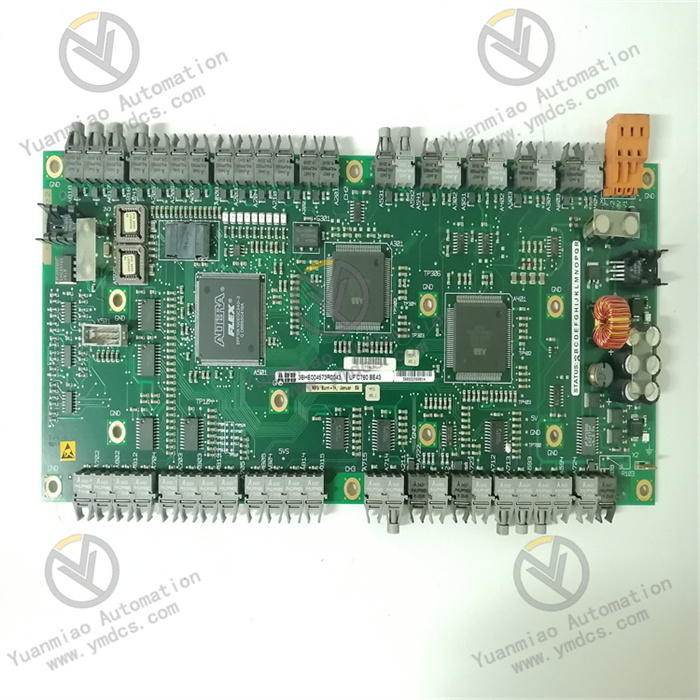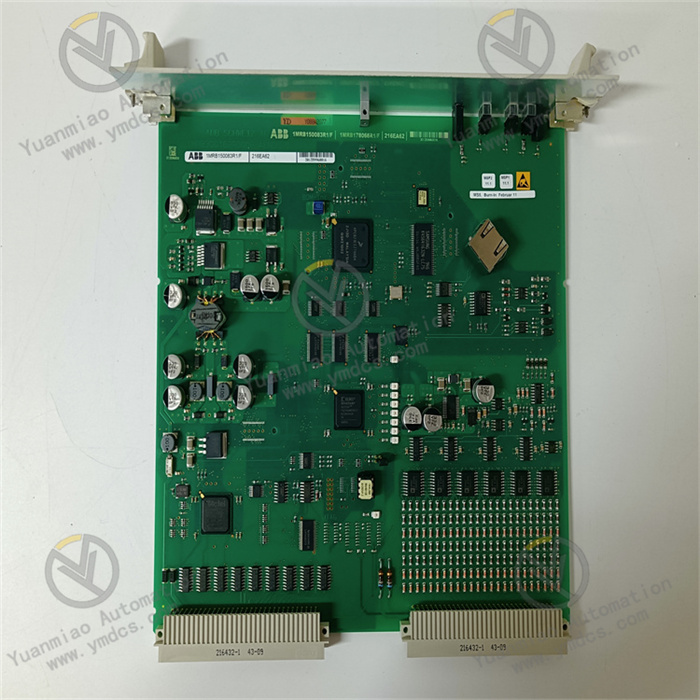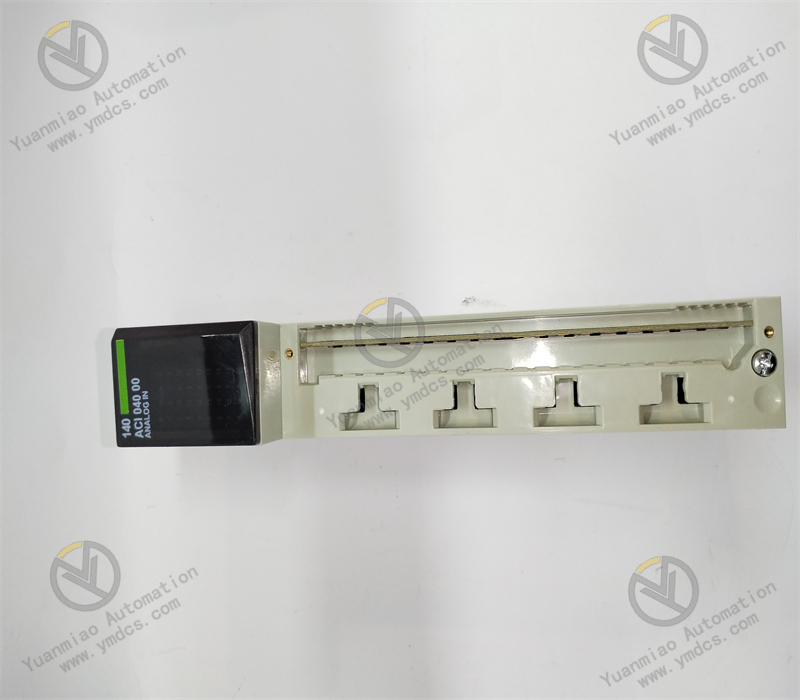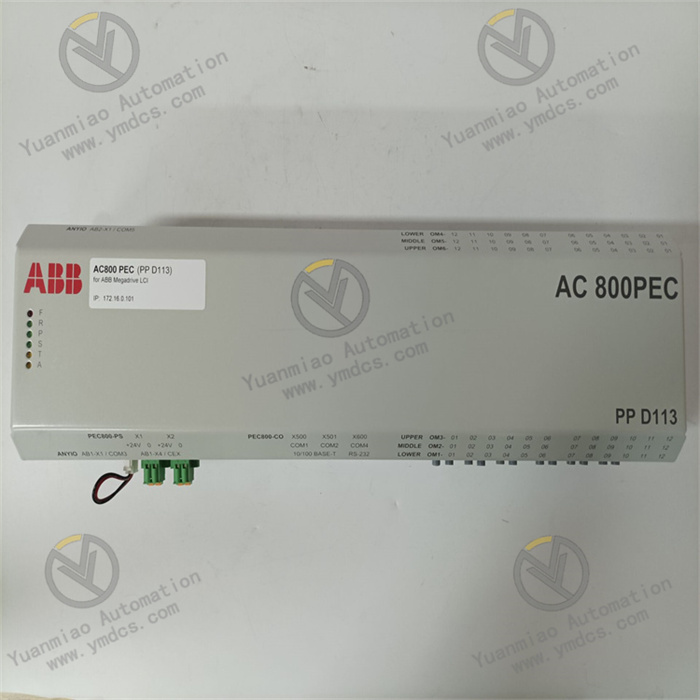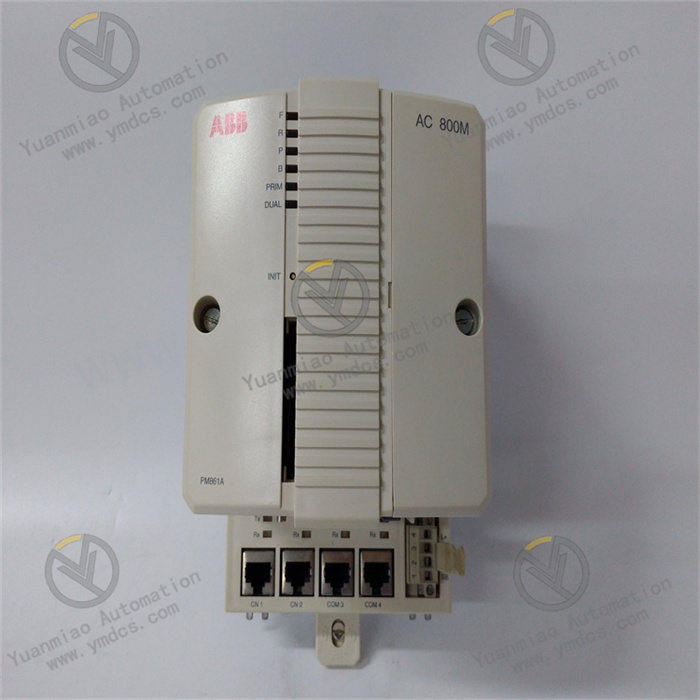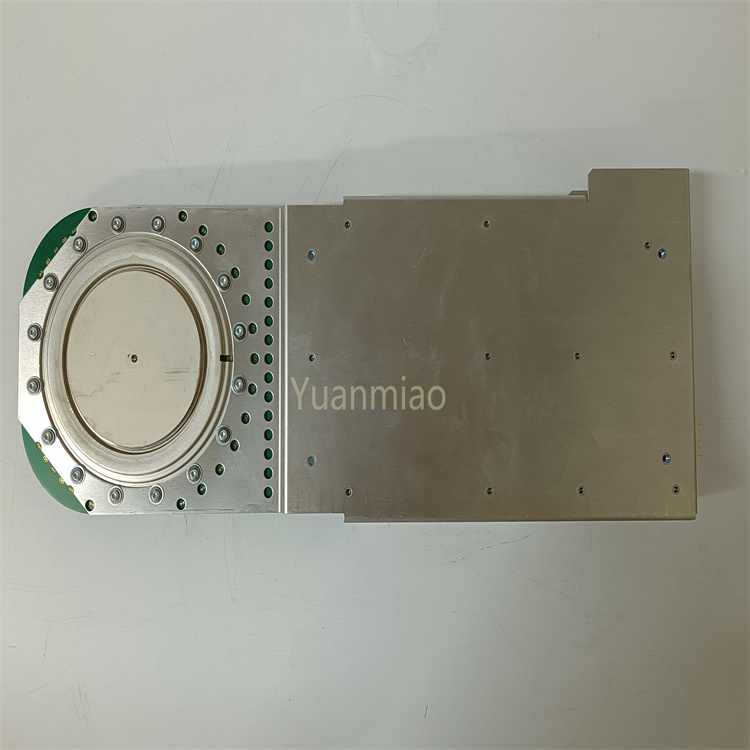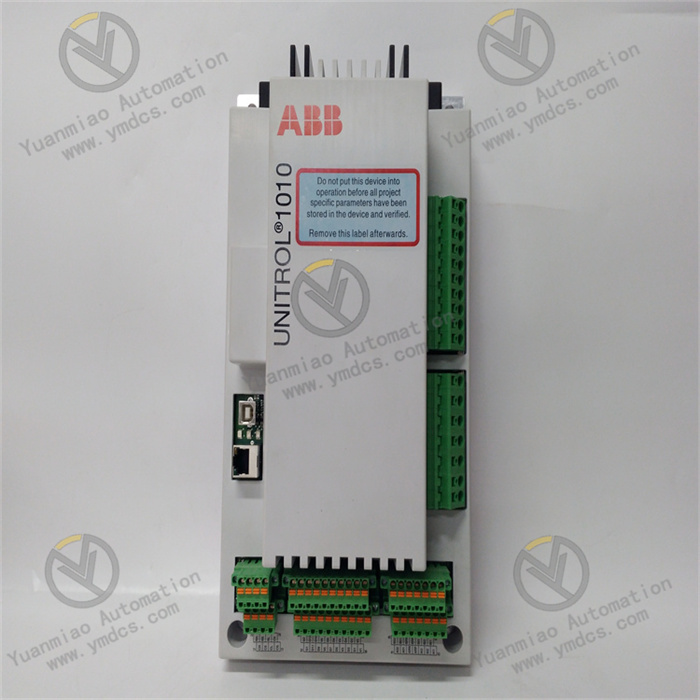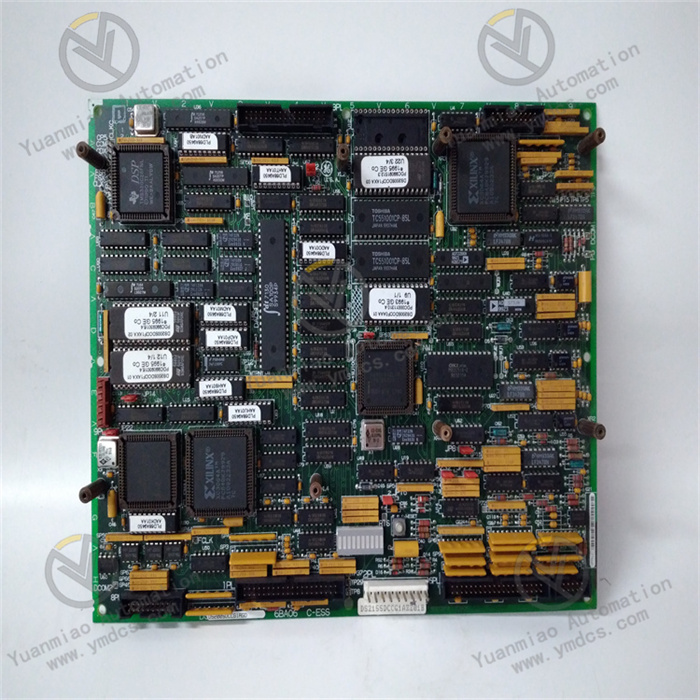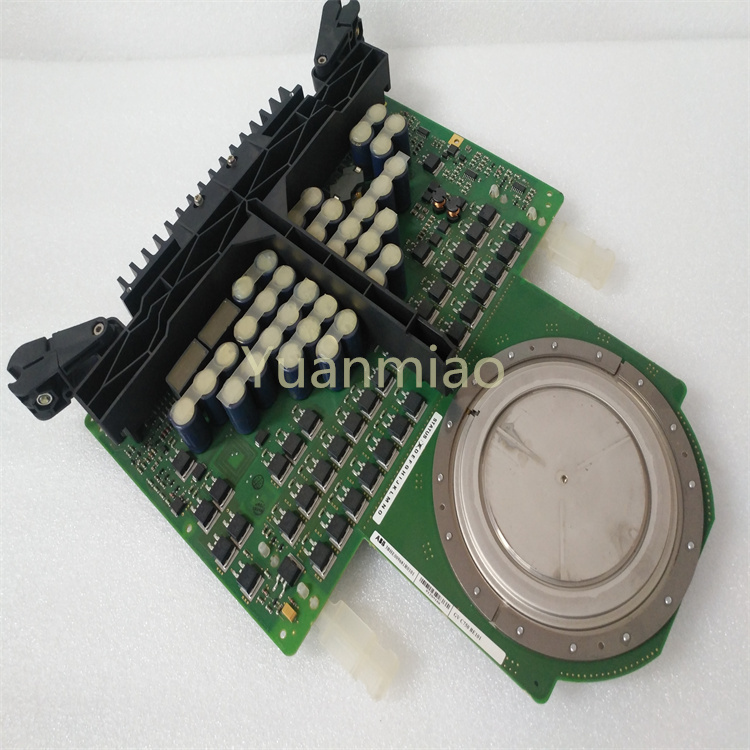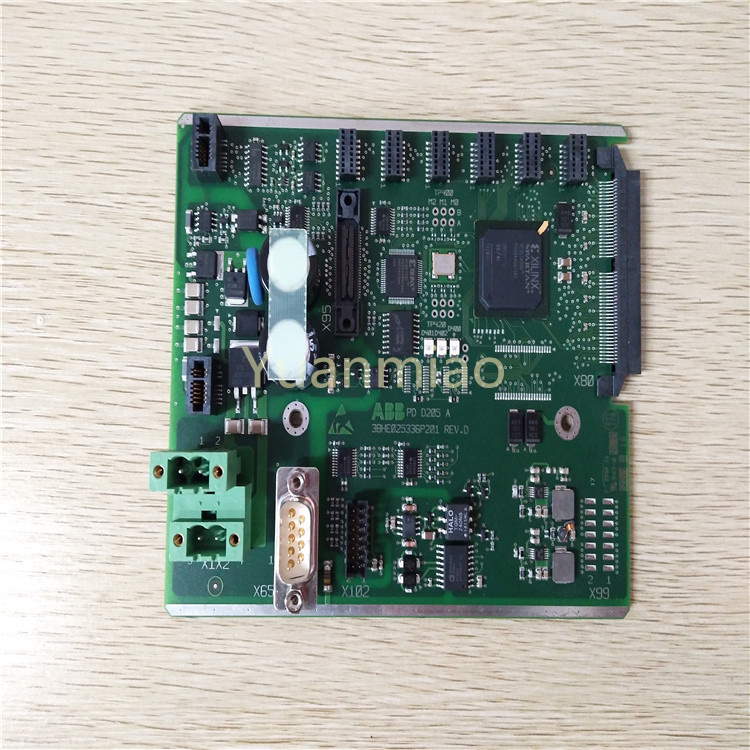Description
ABB CI522A 3BSE018283R1
The ABB CI522A 3BSE018283R1 is an analog input module belonging to the AC 800M controller series. It is primarily used for acquiring and processing analog signals in industrial automation systems, supporting multiple signal types (such as voltage, current, thermocouples, resistance temperature detectors, etc.), and features high reliability and flexibility, making it suitable for complex industrial environments.
I. Functional Features
- Signal Acquisition Capability
- Current signals: 4-20 mA, 0-20 mA, etc.
- Voltage signals: 0-10 V, ±10 V, etc.
- Temperature signals: Thermocouples (e.g., Type K, J, T), resistance temperature detectors (e.g., Pt100, Pt1000).
- Input Channels: Typically 8 or 16 analog input channels (specific to hardware specifications), supporting differential or single-ended input.
- Signal Types:
- High-Precision Conversion: Utilizes a high-resolution ADC (analog-to-digital converter), with a typical resolution of 16 bits or higher to ensure measurement accuracy.
- Communication and Integration
- Communication Protocol: Communicates with the controller via the ABB AC 800M backplane bus, supporting real-time data exchange.
- System Compatibility: Seamlessly integrates with ABB's Control Builder M software, enabling online configuration and diagnostics.
- Advanced Functions
- Signal Processing: Built-in functions such as digital filtering, linearization correction, and open-circuit detection to enhance signal stability.
- Redundancy Configuration: Supports module-level redundancy (requires system hardware support) to improve system reliability.
- Hot-Swap Support: Allows hot-swapping (subject to system permission) for convenient online maintenance.
- Industrial-Grade Design
- Anti-Interference Capability: Features electromagnetic compatibility (EMC) design to adapt to high-interference environments (e.g., near motors, variable frequency drives).
- Wide Temperature Operation: Typically operates within a temperature range of -25°C to +60°C, meeting the needs of harsh industrial environments.
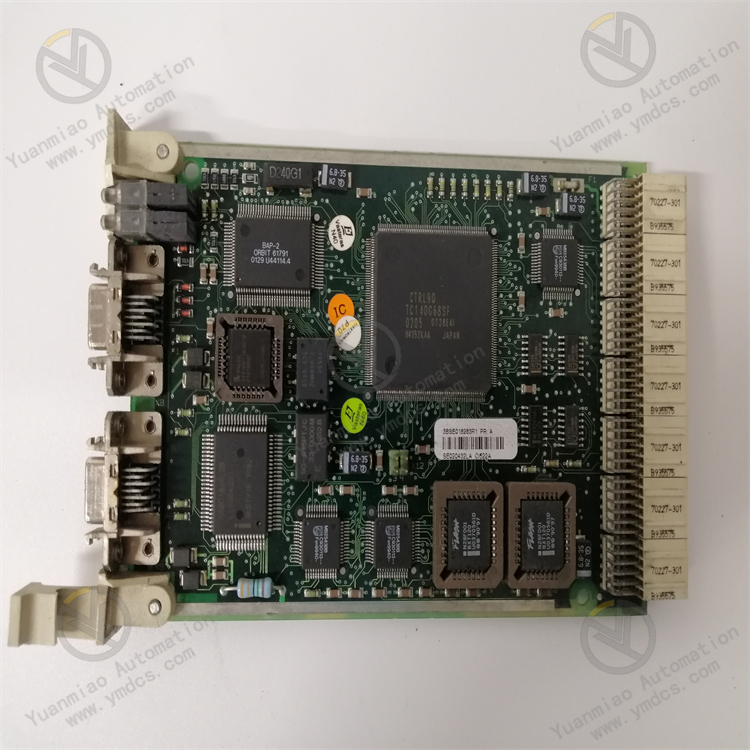
II. Performance Parameters (Typical Values, Subject to Official Manual)
| Parameter | Description |
|---|---|
| Input voltage | 24V DC (powered by backplane) |
| Input current range | 4-20 mA (typical) |
| Voltage input range | 0-10 V, ±10 V, etc. |
| Temperature input accuracy | Thermocouple: ±0.5°C (typical); Resistance temperature detector: ±0.3°C (typical) |
| Sampling rate | Millisecond-level per channel (e.g., 10 ms/channel) |
| Power consumption | Usually less than 2 W |
| Protection level | IP20 (for installation in control cabinets) |
| Certifications | CE, ATEX (optional for explosive environments), IEC 61131-2, etc. |
III. Application Scenarios
- Process control industries: Chemical, pharmaceutical, oil, and gas sectors for acquiring analog signals such as temperature, pressure, and flow.
- Power systems: Monitoring generator parameters, grid voltage/current, energy storage device status, etc.
- Automated production lines: Detecting sensor data (e.g., position, speed) for closed-loop control.
- Building and energy management: Temperature and humidity acquisition in HVAC systems, energy metering, etc.
- Environmental protection and water treatment: Monitoring water quality parameters (e.g., pH, conductivity), liquid level signals, etc.
IV. Common Faults and Solutions
- Power Fault (Abnormal PWR Light)
- Phenomenon: PWR light is off or flashing.
- Troubleshooting steps:
- Check if the backplane power is normal (24V DC) and measure the slot voltage with a multimeter.
- Re-insert the module to ensure good contact with the backplane and check if the latch is locked.
- If the system supports redundant power, switch to the backup power for testing.
- Communication Fault (Abnormal COM Light or Module Not Recognized)
- Phenomenon: COM light is off, always on, or the module shows "offline" in the controller software.
- Troubleshooting steps:
- Confirm that the module type and slot address are correctly configured in Control Builder M, and re-download the configuration.
- Move the module to another slot to rule out backplane bus faults; compare with a normal module of the same type to confirm hardware damage.
- Check if the controller firmware version supports CI522A and upgrade the firmware if necessary (refer to ABB official documentation).
- Abnormal Analog Input Signals (Data Errors or Out-of-Range)
- Phenomenon: Input values fluctuate, remain at extreme values (e.g., 27648 or -27648), or do not match actual signals.
- Troubleshooting steps:
- Signal configuration: Ensure channel parameter settings match the actual signals (e.g., range, filtering, signal type).
- Wiring inspection:
- Current signals: Check if terminal blocks are secure to avoid short circuits or open circuits (e.g., confirm two-wire/three-wire connections for 4-20 mA).
- Voltage signals: Use shielded cables, keep away from strong electromagnetic interference sources, and ensure single-point grounding.
- Temperature signals: For thermocouples, confirm the type and polarity of compensation wires; for resistance temperature detectors, check the wiring method (two-wire/three-wire/four-wire).
- Signal source testing: Input standard signals (e.g., 4 mA, 10 V) with a calibrator. If the module reads abnormally, the channel may be damaged, requiring a switch to a backup channel or module replacement.
- Module Overheating or Environmental Issues
- Phenomenon: Excessive module surface temperature or false alarms due to environmental factors.
- Troubleshooting steps:
- Confirm that the ambient temperature is within the range of -25°C to +60°C and check if the control cabinet is well-ventilated and fans are operational.
- Ensure the module is firmly installed, away from high-power heating equipment, to reduce vibration and electromagnetic interference.
- System Compatibility Issues
- Phenomenon: Abnormal data during multi-module collaboration or incompatibility with third-party devices.
- Troubleshooting steps:
- Check for I/O address conflicts with other modules and ensure sufficient controller resources (memory, processing power).
- When used with third-party sensors, confirm that the signal range is within the module's supported range (e.g., configure 0-20 mA as 4-20 mA and calibrate the offset).
V. Maintenance and Replacement Procedures
- Online Hot-Swap (Requires System Support)
- Disable the module in the software or stop data collection before operation, and wear an anti-static wrist strap.
- Disconnect the faulty module's wiring (if externally connected), remove the module, insert the new module, and restore the wiring.
- Reconfigure the module, download the configuration, and test communication and signal acquisition functions.
- Calibration and Firmware Upgrade
- Calibration: Use ABB's official tools (e.g., Calibration Tool) to perform zero-point and full-scale calibration to ensure accuracy.
- Firmware upgrade: Update the firmware via Control Builder M or Boot Loader tools, referring to official guides to avoid operational errors.
- Preventive Maintenance
- Regularly check the tightness of wiring and clean dust in the control cabinet to avoid faults caused by poor contact or heat dissipation issues.
- Back up system configuration files for quick recovery after module replacement.
- Configure redundant modules for critical channels to improve system reliability.




